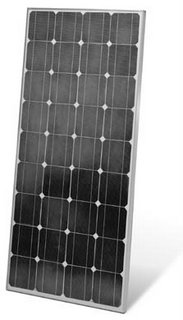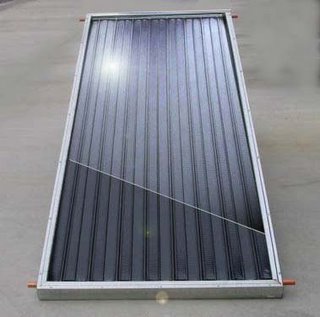Just a quick primer on how to tell during your travels , when you see those black or blue rectangular panels going up on roofs, hopefully many roofs, whether they are for heating water or producing electricity.

Solar electric panels are generally smaller than water panels, and they contain silicon, which gives them a shinier, bluish/black look. You can also usually see a grid of metallic lines going up and down and across electric panels; these metal lines conduct the electrons between the silicon squares in the panel.

Solar hot water panels, called collectors, are generally thicker and larger. They are basically black boxes with water-carrying, copper coil tubing running through them, with a plate of clear glass serving as a cover. Even from a distance you can tell if its a hot water system by one or two thick white or black plumbing tubes leading down from the water panels to the roof.
Also of note: solar hot water is cheaper to do than solar electricity, since the solar hot water panels (collectors) use simple copper/metal/glass materials, whereas, solar electric panels use silicon, which increases the cost.
Keep looking roofward,
--the solarDweller
solar
sustainable
green energy
renewable
solar power
global warming
No comments:
Post a Comment